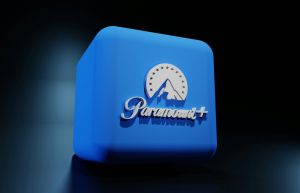
Our home is our safe haven. We need to be safe inside every single room and the truth is that this is not a reality when there is mold or moisture present.
We can define mold as fungal species that will grow in damp, humid, and warm conditions. This is especially possible in the event that air movement is low. When referring to mold spore, they are airborne particles that are released by mold in order to reproduce. These are very dangerous for humans, especially those that are affected by breathing problems, like asthma.
The most important thing to remember is that whenever you notice mold or the moisture inside the home seems to be too high, you should contact professionals. You might be dealing with a leak. In this case, a service like Fix It Right Plumbing leak detection plumber Melbourne can help reduce the source of the problem. Regardless of the issue that causes mold, you have to deal with it fast.
We need to understand that mold is natural and is often found outdoors. However, when it grows indoors, it will eventually lead to health problems. The most common reactions are rashes and allergies but they can easily lead to life-threatening situations as they exacerbate asthma symptoms in both adults and children.
Where Can You Find Mold?
The short answer to this is that mold can be found virtually anywhere in your home. However, the most common places to look at are:
Bathrooms
Crawl spaces and basements that are damp or wet
Attics with leaky roofs
Under carpet or wallpaper
On walls and windows because of condensation
Around or inside air conditioners
The Effects Of Mold
Mold and moisture can lead to wheezing, coughing, skin irritation, eye irritation, hyper sensitivity pneumonitis, and asthma symptoms.
Removing Mold
Fortunately, when you use active steps to remove mold when you notice it, the process is pretty simple. You can use a mixture of water and soap to remove mold from hard surfaces. You do not need to use harsh chemicals. When porous, soft surfaces are affected, like your carpet, it is best to just throw them away.
Make sure that you wear adequate personal protective equipment as you clean mold to protect yourself from spores and when you see that mold occupies a larger area (over 10 feet), the best thing you can do is to contact a professional. Also, as soon as the mold is removed, it can reappear if you do not deal with the moisture problem you have.
Moisture Control
If you want to control mold in your home, you need to first control the moisture that is surely present. Every single moisture source you identify should be fixed as soon as possible. Look for condensation spots and dry all the damp or wet spots as fast as you can after cleaning them.
When you have some wet mattresses, insulation, cardboard boxes, or carpeting, it is best to just throw them away. Your HVAC pans have to be kept clean so that air flow is unobstructed. If there are some moisture-generating household appliances, like a dryer, vent them outside.
The best indoor humidity needs to be low, under 55%. The ideal mark is 30 to 50 percent. Also, when you have HVAC units, they have to be regularly inspected and all mandatory maintenance tasks have to be respected.
Last but not least, make sure that you also look around the house. Your foundation should never stay wet and downspouts are needed so that rainwater can be directed away from the property. In addition, gutters have to be working as they are intended so that water does not enter the home.
© 2025 HNGN, All rights reserved. Do not reproduce without permission.








